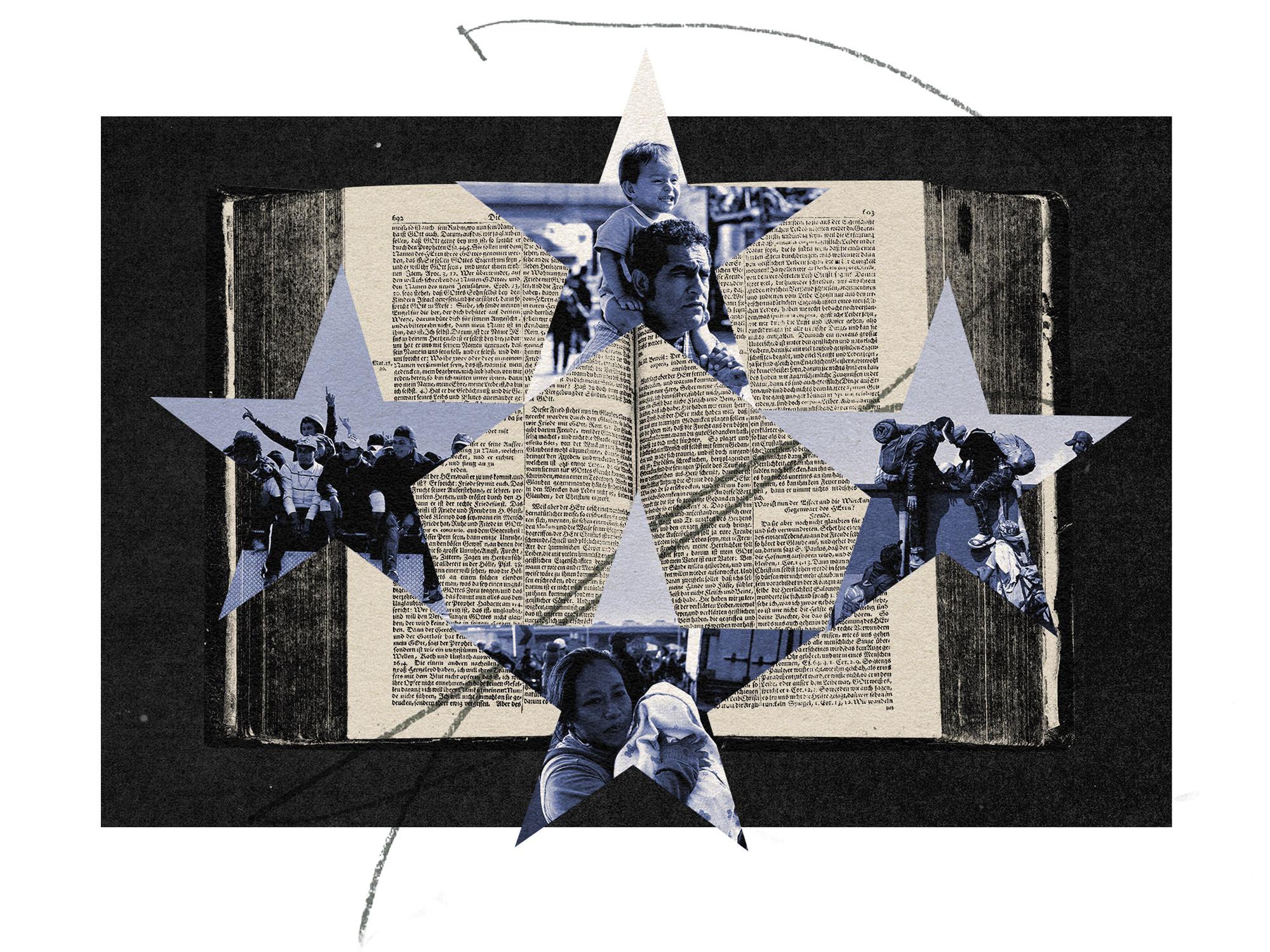
Illustration by Mark Harris
Where Did the ‘Great Replacement’ Theory Come From?
RELIGION PROMOTES WHAT is good in humanity — mercy, wisdom, charity, justice, compassion. These are fundamental to most religious traditions. But religious institutions and movements consist of humans capable of both good and evil, truth and lies, peaceableness and violence. Most Americans have positive feelings about the role religion plays in American life, according to recent surveys. But more than 75 percent are against religious organizations endorsing political candidates or getting involved in partisan politics.
Religious zeal and political power can be an explosive combination — which is why the First Amendment promotes the separation of these powers. Yet the heart and faith of voters impact their choices in the polling booth — and the emotions and imaginations of voters can be swayed by media, social groups, and targeted manipulation to impact an individual’s vote.
One form of manipulation is through conspiracy theories — and conspiracy theories that manipulate religious and social imaginations are particularly potent. They are not new — recall the early U.S. grassroots movements, such as the Anti-Masonic Party and the Know-Nothings, who fought against perceived threats to Protestant Christian values, as well as the John Birch Society’s modern links to the Christian Identity Organization.
As conspiracy theories, disinformation, and populism become more mainstream, one less-understood conspiracy is having an outsized impact on immigration laws: The “great replacement theory” promotes the idea that nonwhite people are brought into the United States and other Western countries to “replace” white voters as part of a godless, liberal political agenda.
The 2017 “Unite the Right” rally in Charlottesville, Virginia, reminded many Americans that the horrors of organized hate were not something in the past. The refrain by white nationalists of “You will not replace us!” recalled virulent antisemitism and anti-immigrant rhetoric of earlier eras. The media repeated the slogan as it tried to make sense of how domestic terrorism, spurred on by online rhetoric regarding the removal of Civil War statues, could have culminated in such social violence and the murder of Heather Heyer by neo-Nazi James Fields Jr. It was a traumatic moment among many in America.
French ideas take root in U.S.
THE TERM “GREAT REPLACEMENT” has its contemporary genesis in a set of racist books by two French authors. Renaud Camus released his treatise Le Grand Remplacement (2011) and drew inspiration from Jean Raspail’s novel Le Camp des Saints (1973). These books were key influences in the Trump administration as well as the 2012 and 2022 French presidential elections.
Renaud Camus, born in rural France in 1946, earned post-graduate degrees in philosophy, political science, and history of law. He began his political activism as a vocal socialist. That is until 1992, when he had an “epiphany” on a trip to an old French village, where he noted a change in the village’s ethnic composition. This led him to believe that white European Catholics were disappearing for the benefit of Middle Eastern, Black, and Muslim populations who would replace them.
In 2002, Camus created his own racialist political party, which ran candidates for the first time during the 2012 French presidential election. His party’s platform advocated “reimmigration” and the end of all new immigration to the country. The reimmigration platform promoted legislation to return all immigrants to their country of origin, thus eliminating nearly all nonwhite people from France. He used his position as party founder to spread hate and generate fear about “replacement” across Europe.
In 2017, Camus co-founded the National Council of European Resistance, a pan-European movement to oppose all immigration to Europe and to defeat what he termed “replacist totalitarianism.” For Camus, the politics of Europe were under the control of a Leftist elite promoting white “genocide by substitution” through the implementation of a “great replacement theory” to create a weak and submissive populace that would easily succumb to this elite’s New World Order (itself a conspiracy theory that fears an emerging totalitarian world government).
Despite his launch into party politics, Camus thought that the 2022 French presidential election would define a point where it could be too late to “save” France through a democratic process. He believed that by then those who had immigrated to the country would have become the “masters” of the elections. In Camus’ mind, there would no longer be a solution through the ballot box. He wrote The Great Replacement to warn about what was to become of Western civilization.
Throughout the book Camus argues that the reduced role of Christianity in society, industrialization, and the loss of national cultures has created a need for immigration if capitalism is to continue and thus maintain the materialistic globalized world. He holds that capitalism and the lack of God in Western society have led to the perfect nexus for whites to be replaced.
Read the Full Article

Got something to say about what you're reading? We value your feedback!


